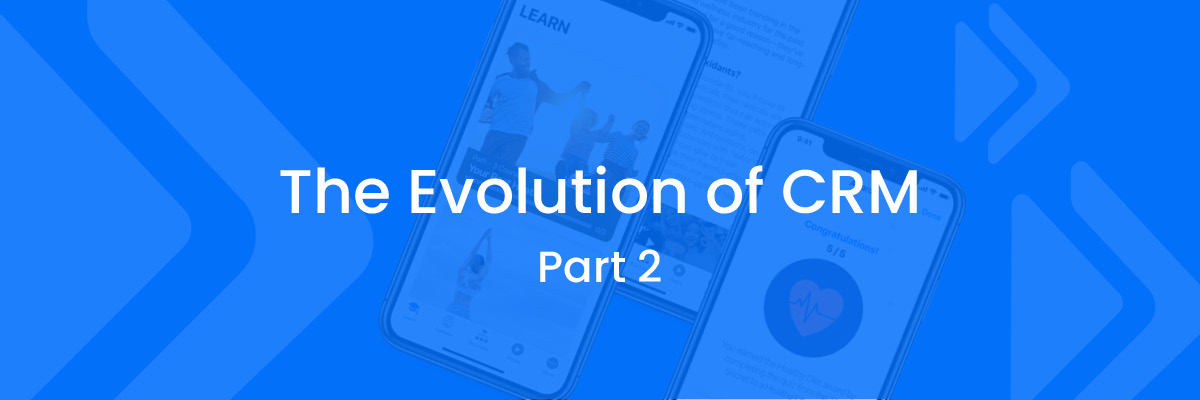It’s been a couple of weeks since we last talked about the history of CRM. In case you missed it, check out the first part of the series. In that article, I condensed the important events of that decade’s long history into a few paragraphs, following it through to when the dot-com bubble burst around 2000.
But as you might have guessed, there’s a lot more history to cover. Plenty of innovations developed after that–several of today’s big players didn’t even enter the CRM scene until the early 2000s, and, of course, there’s the all-important question of how Hussle factors into all of this. So I’ve got my trusty cup of coffee, mood music in the background, and I’m ready to jump back into history.
Where Were We
It took a few years for companies to rebuild and grow again after the dot-com crash, but that time certainly was well-spent. It was spent refining and innovating as new companies decided to throw their hats into the CRM ring.
SugarCRM popped up in 2004 and gave the world its first open-source CRM software, which allowed companies to customize the software to their needs and cheaply incorporate CRM into their business.
A few years later, Apple launched the iPhone. While it wasn’t the only factor, it’s a good milestone to mark the massive increase in mobile device adoption rates. This meant that mobile CRM was back on the table, once there was a cheap and reliable way to store that customer data.
As I briefly mentioned in the first part of this series, cloud-based CRMs were already developed in 1999. So why did it take so long for “the cloud” to catch on? What were we waiting for?
Amazon. Well, not specifically Amazon. But when they unveiled their S3 service in 2006, it’s not an exaggeration to say that they changed the world. Now, not only was there very little reason for a company to operate and maintain its servers on-site, but the servers available in the cloud were now scalable, way more affordable, and had more guaranteed uptime than anybody else. It was the catalyst needed to help online markets recover, grow, and break through that glass ceiling into the big earners we know them as today.
A Multi-Billion Dollar Industry
There was one more innovation that I should mention. A couple of years after Amazon launched S3, a shift in focus came to the CRM industry. No longer was it just about generating sales and keeping track of transactions, but the rise of social networks like Facebook and Twitter made it clear that there was a massive benefit in an interactive relationship with customers. Appropriately, this is referred to by most companies as Social CRM.
Social CRM involves integrating social media channels into your CRM platform. This allows customers to interact with your company through whichever social media platform they use the most and allows the company to gain useful insight into their customers and how they operate. It also gives the company a face, a personality, and the chance to develop a social relationship with its customers.
Combining all of those features and innovations led to massive growth within the CRM industry, with reported earnings of over $48 billion in 2018.
Enter Hussle
That brings us roughly to the time when Hussle entered the scene. We had our trials and tribulations to get through, which I’ll have to save for another time. But the real question is, why did we decide to get into CRM? The short answer is that we knew we could bring something unique and innovative.
I don’t want this article to turn into a sales pitch, but if you’ll allow me a couple of paragraphs, I want to touch on a couple of cool toys we’ve got on hand on our CRM platform. With every feature, we strive to replicate tangible, in-person sales experiences for our customers.
Interactive video is one of my favorite examples of that. It’s an easy way to interact with leads in a personal way, with clickable action links that appear on the screen to put your audience’s eyes on exactly what you want to sell. There’s also automatic sampling, which allows customers to try products before purchasing them, it just takes a few clicks, and it’s a nice virtual equivalent to letting someone try out whatever you’re selling. We also have a built-in learning management system called Learn, a feature designed to increase and reward education through an intuitive and fun training process.
While nobody can be certain what the next CRM innovation will be, I love reading about new advancements and technologies being integrated into those platforms. Whatever happens next, it’s safe to assume that you’ll have a system that is faster, and easier to use, with more features than ever to ensure your customers are well organized and properly managed, you’ll have a ton of resources at your disposal to help you do it.
Beats the heck out of a Rolodex, doesn’t it?

